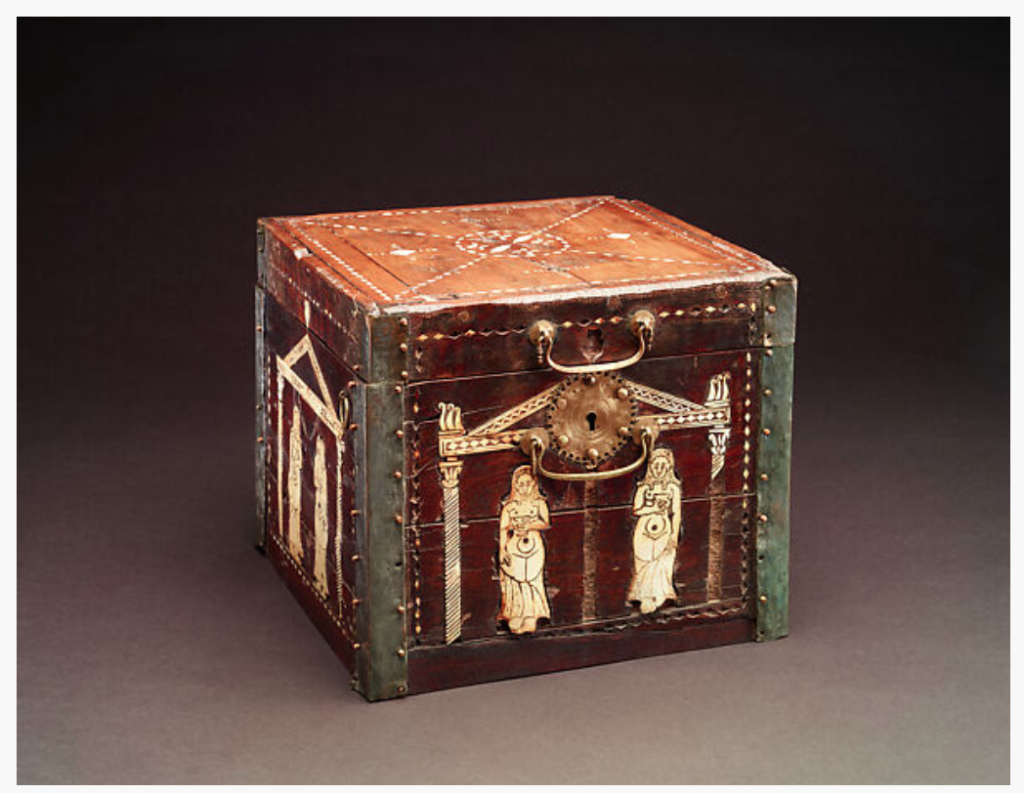The Metropolitan Museum of Art in New York is currently presenting a compelling exhibition titled “Africa and Byzantium.” This exhibition illuminates the profound impact of North Africa on the Byzantine/Roman Empire, a facet often overshadowed in our understanding of Mediterranean art. While our knowledge typically centers around the Byzantine Empire (circa 330–1453), the influence of North Africa played a pivotal role in shaping Mediterranean art. The Africa and Byzantium exhibition combines masterpieces, including mosaics, pottery, metalwork, paintings, and religious manuscripts from the Byzantine Empire, Tunisia, Egypt, Sudan, Ethiopia, Libya, Algeria, and Morocco.

To delve into the critical aspects of Mediterranean art and the Byzantine Empire, it is essential first to understand the historical context. The Byzantine Empire emerged as a continuation of the Eastern Roman Empire, persisting after the fall of the Western Empire. At its zenith, the Western Empire encompassed a vast expanse of Europe, including Britain, Turkey, Greece, and Italy.
On the other hand, the Eastern Empire, also known as the Byzantine Empire, comprised territories in Eastern Europe and North Africa. When the Romans expanded into Africa, they encountered a region already flourishing with its civilization, livelihood, and culture. In 416 CE, Saint Augustine questioned the notion of everyone being Roman simply due to the Roman Empire’s invasion.
Until 416 CE, the influence and diversity of the Byzantine Empire were unmistakable, leaving an indelible mark on food, religion, literature, and culture. For almost 700 years, the Roman-Byzantine Empire stood as one of the wealthiest empires and was a hub of learning and academia, particularly along the Mediterranean basin and the Nile.
The Africa and Byzantium Exhibition carefully examines the artifacts from the antiquity period, shedding light on the cross-cultural interactions that shaped the artistic landscape. The Box with Isis-Tyche-Aphrodite and Dionysus Serapis-Egypt, dating from the mid-4th to 5th century, for instance, exemplifies the influence of Hellenistic culture on Egypt, combining a Hellenistic tradition with deep roots in Egyptian religion.

Wood and ivory. Image courtesy of The Met Museum.
In the Painted Woman on the Panel, the figure embodies the goddess Isis. It features a feathered crown and a sun disk framed by cow’s horns. Crafted from sycamore wood, the panel likely accompanied Isis’s companion, Serapis. This syncretic imagery, blending beliefs across eras, is further evident on an ivory box depicting Isis with attributes of the Roman goddess Tyche-Fortuna.

2nd century. Image courtesy of The Met Museum.
The exhibition also highlights Algerian lamp vessels discovered in Thamugadi, offering insight into ancient Numidian culture. Notably, the meticulous craftsmanship of the lamp, allowing a flame to protrude from the figure’s lips, reflects the metalworker’s familiarity with the countenance of Black Africans.
Sudan lampstands, a significant part of the collection, reveal the enduring connections between Nubia and the early Byzantine world. Around 350, the Kingdom of Aksum, covering present-day Eritrea and parts of Ethiopia, possibly conquered Meroë (Kush). Despite this, Nubians maintained contact with metal objects featuring Hellenistic themes discovered at late antique Nubian burial sites.

In Qustul, a royal tomb unveiled the lampstand of Apollo, blending symbols from Egyptian and Hellenistic art. The exhibition also includes a jug in the upper-middle-class Nubian town of Karanog, showcasing the region’s rich heritage. Recent research in Sudan has revealed extensive iron mining through the sixth century, establishing metalworking as an indigenous Nubian trade.
The Africa and Byzantium Exhibition serves as a celebration of African influences. Furthermore, it contributes to an ongoing discourse on African culture’s significance in contemporary and modern works. This captivating exhibition runs until March 4th at the Metropolitan Museum in New York. It offers a unique opportunity to explore the intersection of North African and Byzantine artistic legacies. Don’t miss the chance to experience this extraordinary showcase of cultural richness and historical connections.


